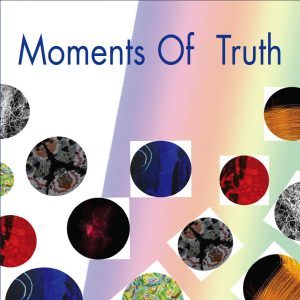Moments Of Truth
10 December – 23 December 2016
Title: Moments Of Truth
curated by di STEFANIA CARROZZINI
ONISHI PROJECT
t. 212.695.8035 / info@onishiproject.com / www.onishiproject.com
521 West 26th street – New York, NY 10001
Artists
Beth Charles, Adriana Collovati, Judith Cordeaux, Betta Gancia, Rebecca Humphrey, Gio Sciello, Susi Zucchi
Artists have always been hunters of the truth, not of a merely objective truth, but a marvellously subjective one and, why not, also a chaotic one which is the truth of experience and of life. Life as an absolute value which, basically does not belong to us, becomes the supreme concept in as much as it is the manifestation of the truth. This exhibition wishes to make us reflect upon the moment of inspiration, that fleeting moment of the here and now, where all seems possible, where the imagination knows no bounds and opens up to infinite creative possibilities.
Artists are not solitary islands, even though solitude is an important factor in the shaping of interior truths, rather they form an invisible thread of connections which unravels in the total freedom and trust of the creative impulse. The truth is the thread that leads out of the labyrinth. And here the labyrinth is meant symbolically as an existential ordeal, a path of both ethical and aesthetical growth.
Art may not be considered separately from truth. The communicative power is directly proportional to the intensity and the truth of the moment of creation. And thus the work of art is the result of a poetic dynamism which is embodied in the sensuality of the image.
Which are the moments of truth for the artist? They are instants in which the Truth, a precise intuition, imposes itself on our conscience and materialises into the work of art. The title “Moments of Truth”, presupposes a temporariness tied to becoming, almost a philosophy of vision. A dimension of being and doing which belongs to the will and reflects the vitality and the purity of the intention.
The truth is understood as sincerity of the expressive behaviour of the artist and takes part in a certain sense in the morality of art. Truth is risky and revolutionary. It is the only way to keep alive the poetical power of being.
There is always a magic moment in which artists reach a level of absolute clarity and absolve their longing for truth which they then share with the world.
The question of all questions is: what is the truth of art? Is it not perhaps true that which conforms to the universal laws? Then there is the problem of appearance and make-believe and we know that art and make-believe have been connected since the beginning of time. Nevertheless, there are significant examples which belong to history. Let us think of Joseph Beuys, who throughout his research transmitted the truth of art as a wound, a tearing, a laceration. The combination art/suffering brings us back to a truth which is expressed through pain.
Instead let us turn our minds to the celestial and spiritual vision of Yves Klein. His is the truth of colour, of space, but especially of time. And on this subject, Pierre Restany wrote in La minute de verité: “the author needs from the onlooker that intense and fundamental moment of truth, without which all poetry would be incommunicable”. Artists offer themselves to the world and to the infinity of truth with awareness of the limit, with a temporariness which goes beyond convention.
In that instant of truth the artists put themselves to the test. Beyond the visual codes of communication, everything is summarised in a gesture, which marks permanently the mind of those who are receptive to it. A gesture, a mark, cathartic action, a reality which encompasses all the differences and the suffering. Behold the truth becomes manifest, it emerges in all its splendour from the unknown space, where the void does not exist: it is light which casts back the shadows, a voice offering encouragement.
Because, without the slightest doubt, one cannot know the truth of art without acceptance of make-believe.
Stefania Carrozzini

